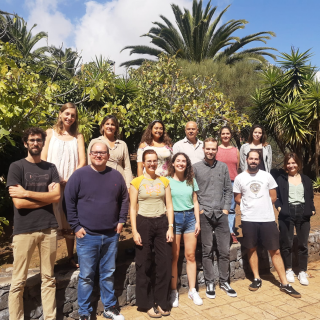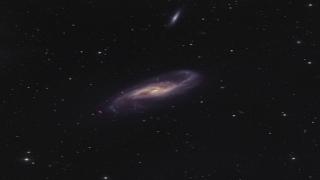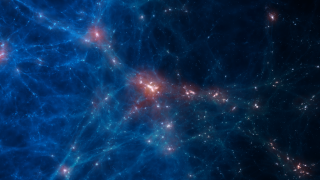Bibcode
Zaritsky, Dennis; Golini, Giulia; Donnerstein, Richard; Trujillo, Ignacio; Akhlaghi, Mohammad; Chamba, Nushkia; D'Onofrio, Mauro; Eskandarlou, Sepideh; Hosseini-ShahiSavandi, S. Zahra; Infante-Sainz, Raúl; Martin, Garreth; Montes, Mireia; Román, Javier; Sedighi, Nafise; Sharbaf, Zahra
Referencia bibliográfica
The Astronomical Journal
Fecha de publicación:
8
2024
Número de citas
15
Número de citas referidas
11
Descripción
We present an overview of the LBT Imaging of Galactic Halos and Tidal Structures survey, which currently includes 25 nearby galaxies that are on average ∼1 mag fainter than the Milky Way, and a catalog of 54 low central surface brightness (24 < μ 0,g /mag arcsec‑2 < 28) satellite galaxy candidates, most of which were previously uncatalogued. The depth of the imaging exceeds the full 10 yr depth of the Rubin Observatory's Legacy Survey of Space and Time. We find, after applying completeness corrections, rising numbers of candidate satellites as we approach the limiting luminosity (M r ∼ ‑8 mag) and central surface brightness (μ 0,g ∼ 28 mag arcsec‑2). Over the parameter range we explore, each host galaxy (excluding those that are in overdense regions, apparently groups) has nearly four such candidate satellites to a projected radius of ∼100 kpc. These objects are mostly just at or beyond the reach of spectroscopy unless they are H I rich or have ongoing star formation. We identify three, possibly four, ultra-diffuse satellite galaxies (effective radius >1.5 kpc). This incidence rate falls within expectations of the extrapolation of the published relationship between the number of ultra-diffuse satellite galaxies and host halo mass. Last, we visually identify 12 candidate satellites that host a nuclear star cluster (NSC). The NSC occupation fraction for the sample (12/54) matches that published for satellites of early-type galaxies, suggesting that the parent's morphological type plays at most a limited role in determining the NSC occupation fraction.
Proyectos relacionados

Huellas de la Formación de las Galaxias: Poblaciones estelares, Dinámica y Morfología
Bienvenida a la página web del g rupo de investigación Traces of Galaxy Formation. Somos un grupo de investigación amplio, diverso y muy activo cuyo objetivo principal es entender la formación de galaxias en el Universo de una manera lo más completa posible. Con el estudio detellado de las poblaciones estelares como bandera, estamos constantemente
Anna
Ferré Mateu

Las Galaxias Espirales: Evolución y Consecuencias
Nuestro grupo pequeño esta bien conocido y respetado internacionalmente por nuestro trabajo inovativo e importante en varios aspectos de la estructura y la evolución de las galaxias espirales cercanas. Usamos principalmente observaciones en varias longitudes de onda, explotando las sinergías que nos permiten responder a las cuestiones más
Johan Hendrik
Knapen Koelstra

Astrofísica Numérica: Formación y Evolución de Galaxias
Entre las cuestiones fundamentales en Astronomía y Astrofísica están la formación y evolución de galaxias. Las escalas de tiempo y tamaño son tan astronómicas que su observación en galaxias individuales es imposible. Solo con el uso de simulaciones numéricas es posible entender la formación de estructuras cósmicas dentro del actual marco
Claudio
Dalla Vecchia